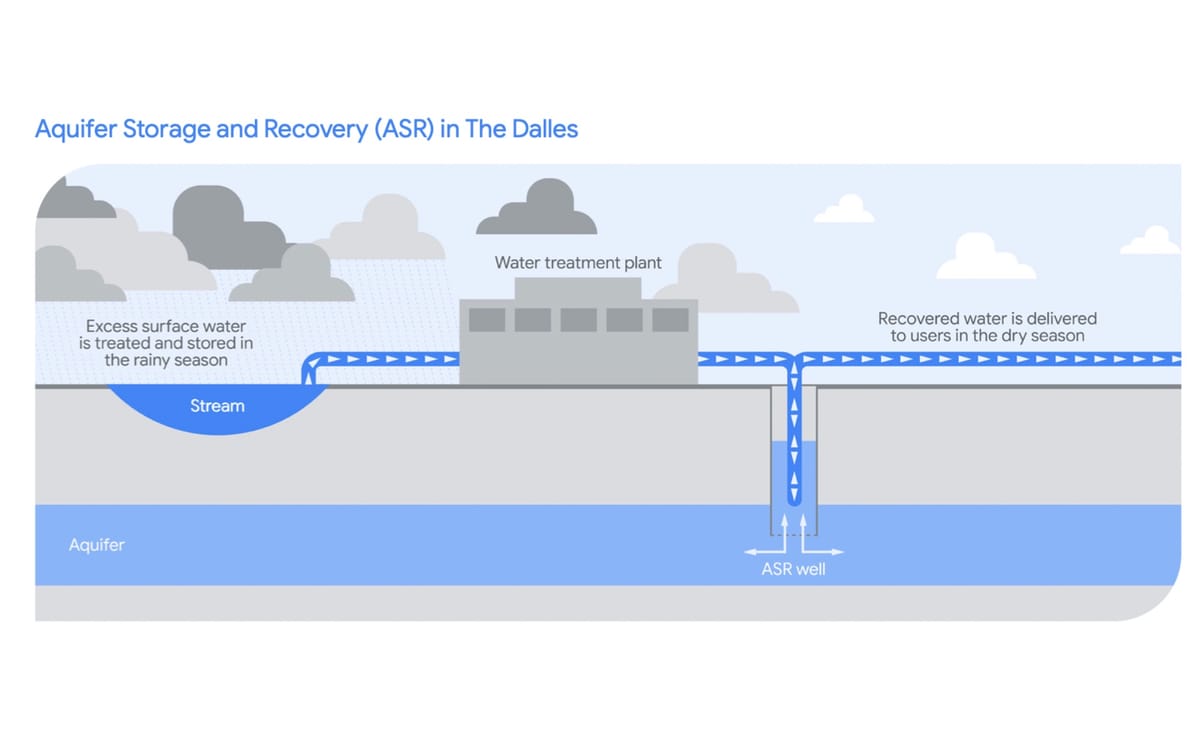Report on Candidates for Ciudad Soil & Water Conservation Board Supervisor
This report outlines the qualifications and platforms of the candidates for the position of Soil & Water Supervisor on the Ciudad Soil & Water Conservation Board, with a specific focus on their alignment with the United Nations Sustainable Development Goals (SDGs).
Kaelan Ashby Dreyer-Brunacini
Candidate Profile
- Name: Kaelan Ashby Dreyer-Brunacini
- Occupation: Farmworker
- Stated Experience: Firsthand experience in agriculture and conservation.
Qualifications and Alignment with Sustainable Development Goals
Mr. Dreyer-Brunacini’s platform emphasizes a direct, hands-on approach to resource management, aligning with several key SDGs.
- SDG 2 (Zero Hunger) & SDG 15 (Life on Land): As a farmer, his work is directly linked to local food production and land stewardship. His focus on soil health is fundamental to sustainable agriculture and protecting terrestrial ecosystems.
- SDG 6 (Clean Water and Sanitation): His experience addresses the challenges of local water use, a critical component for ensuring the availability and sustainable management of water for both agriculture and the wider community.
- SDG 11 (Sustainable Cities and Communities): By running to “ensure future generations can farm and thrive,” he advocates for the long-term resilience and sustainability of the local community, protecting vital natural resources that support the population.
His commitment to stewardship aims to bring a practical, ground-level perspective to the board’s decisions, ensuring they support both environmental integrity and agricultural viability.
James Steven “Steve” Glass
Candidate Profile
- Name: James Steven “Steve” Glass
- Occupation: Part-time biology instructor, CNM
- Stated Experience:
- Ciudad SWCD Board (2003-present)
- NM Soil & Water Conservation Commission (2013-present)
- Water Protection Advisory Board (2012-2024)
- MS in Environmental Biology
Qualifications and Alignment with Sustainable Development Goals
Mr. Glass’s extensive career and long-term service demonstrate a deep commitment to environmental policy and conservation, directly supporting numerous SDGs.
- SDG 13 (Climate Action): He explicitly addresses the need to manage resources in the face of climate change impacts, including “warming temperatures, decreasing water availability and increasingly unpredictable weather events,” positioning his work as crucial for climate adaptation.
- SDG 6 (Clean Water and Sanitation) & SDG 15 (Life on Land): His 50-year career dedicated to “protecting and restoring our precious and critical natural resources” and his decades of service on soil and water conservation boards show a profound and sustained commitment to these goals.
- SDG 11 (Sustainable Cities and Communities): His stated objective is to contribute to the “well-being of our community by advancing environmental health,” ensuring that future generations have the necessary resources to thrive in a sustainable urban and regional environment.
His academic background and extensive board experience provide a strong foundation for policy-making aimed at long-term environmental and community resilience.
Analysis of Sustainable Development Goals in the Article
1. Which SDGs are addressed or connected to the issues highlighted in the article?
The article, which profiles candidates for the Ciudad Soil & Water Conservation Board, addresses several interconnected Sustainable Development Goals (SDGs) related to environmental management, agriculture, and climate resilience.
-
SDG 2: Zero Hunger
This goal is relevant through its focus on sustainable agriculture. Candidate Kaelan Ashby Dreyer-Brunacini, a “Farmworker,” explicitly discusses his experience in “agriculture” and his goal to “ensure future generations can farm and thrive here.” This directly connects to promoting sustainable agricultural practices to ensure long-term food security.
-
SDG 6: Clean Water and Sanitation
The very title of the office, “Soil & Water Supervisor,” places this SDG at the core of the discussion. The candidates’ focus on “water use,” “protecting soil and water,” and concerns over “decreasing water availability” highlight the importance of sustainable water management, a key component of SDG 6.
-
SDG 13: Climate Action
This goal is explicitly addressed by candidate James Steven “Steve” Glass, who mentions the need for future generations to thrive “in the face of warming temperatures, decreasing water availability and increasingly unpredictable weather events.” This statement directly links the board’s conservation work to building resilience against the impacts of climate change.
-
SDG 15: Life on Land
This goal is central to the article’s theme of conservation. The candidates’ qualifications emphasize “protecting and restoring our precious and critical natural resources,” “soil health,” and “conservation.” The mention of Albuquerque’s “diverse natural scenery such as the Mountains in the East, Bosque along the river, and the desert Mesa in the west” further underscores the focus on protecting and restoring terrestrial ecosystems.
2. What specific targets under those SDGs can be identified based on the article’s content?
Based on the issues and priorities mentioned by the candidates, several specific SDG targets can be identified:
-
Target 2.4: Sustainable food production and resilient agricultural practices
This target aims to “ensure sustainable food production systems and implement resilient agricultural practices… that progressively improve land and soil quality.” Candidate Dreyer-Brunacini’s focus on “agriculture,” “soil health,” and ensuring “future generations can farm” aligns directly with this target’s goal of creating sustainable and resilient farming systems.
-
Target 6.4: Increase water-use efficiency and address water scarcity
This target calls to “substantially increase water-use efficiency across all sectors and ensure sustainable withdrawals and supply of freshwater to address water scarcity.” The concerns raised by both candidates about “water use” and “decreasing water availability” point to the need for efficient water management, which is the central aim of this target.
-
Target 13.1: Strengthen resilience and adaptive capacity to climate-related hazards
This target focuses on strengthening the ability to adapt to climate-related disasters. Candidate Glass’s statement about the challenges of “warming temperatures… and increasingly unpredictable weather events” directly connects the board’s work to building local resilience and adaptive capacity to the impacts of climate change.
-
Target 15.3: Combat desertification and restore degraded land and soil
This target aims to “combat desertification, restore degraded land and soil… and strive to achieve a land degradation-neutral world.” The repeated emphasis on “soil health” and the fundamental duty of “protecting soil” as part of the conservation board’s mandate are directly related to achieving this target at a local level.
3. Are there any indicators mentioned or implied in the article that can be used to measure progress towards the identified targets?
The article does not mention official SDG indicators, but it implies several measurable areas that could be used to track progress toward the identified targets.
-
Implied Indicator for Target 2.4: Measures of soil health
The candidates’ focus on “soil health” implies that progress could be measured by tracking the quality of agricultural land. An indicator could be the “proportion of agricultural area under productive and sustainable agriculture,” which would be assessed through soil quality metrics like organic matter content and erosion rates within the conservation district.
-
Implied Indicator for Target 6.4: Water-use efficiency
The concern over “decreasing water availability” and the need to manage “water use” implies an indicator related to efficiency. Progress could be measured by tracking the volume of water used per unit of agricultural production or per capita, aiming for a reduction over time to demonstrate increased efficiency.
-
Implied Indicator for Target 13.1: Development of local climate adaptation strategies
Candidate Glass’s reference to climate change impacts implies the need for proactive planning. An indicator of progress would be the existence and implementation of local strategies to manage water resources and agricultural practices in response to “warming temperatures” and “unpredictable weather events.”
-
Implied Indicator for Target 15.3: Rate of land and soil restoration
The commitment to “protecting soil” and “restoring our precious and critical natural resources” suggests that progress could be measured by the amount of land being actively restored. An indicator could be the “proportion of land that is degraded over total land area,” with the goal of reducing this proportion through conservation efforts.
4. Summary Table of SDGs, Targets, and Indicators
| SDGs | Targets | Indicators (Implied from Article) |
|---|---|---|
| SDG 2: Zero Hunger | Target 2.4: By 2030, ensure sustainable food production systems and implement resilient agricultural practices. | Metrics related to “soil health” to ensure future generations can farm. |
| SDG 6: Clean Water and Sanitation | Target 6.4: By 2030, substantially increase water-use efficiency and address water scarcity. | Measures of efficiency in “water use” in response to “decreasing water availability.” |
| SDG 13: Climate Action | Target 13.1: Strengthen resilience and adaptive capacity to climate-related hazards and natural disasters. | Implementation of local strategies to cope with “warming temperatures” and “unpredictable weather events.” |
| SDG 15: Life on Land | Target 15.3: By 2030, combat desertification, restore degraded land and soil. | Rate of restoration of “natural resources” and improvement in “soil health” to combat land degradation. |
Source: abq.news







